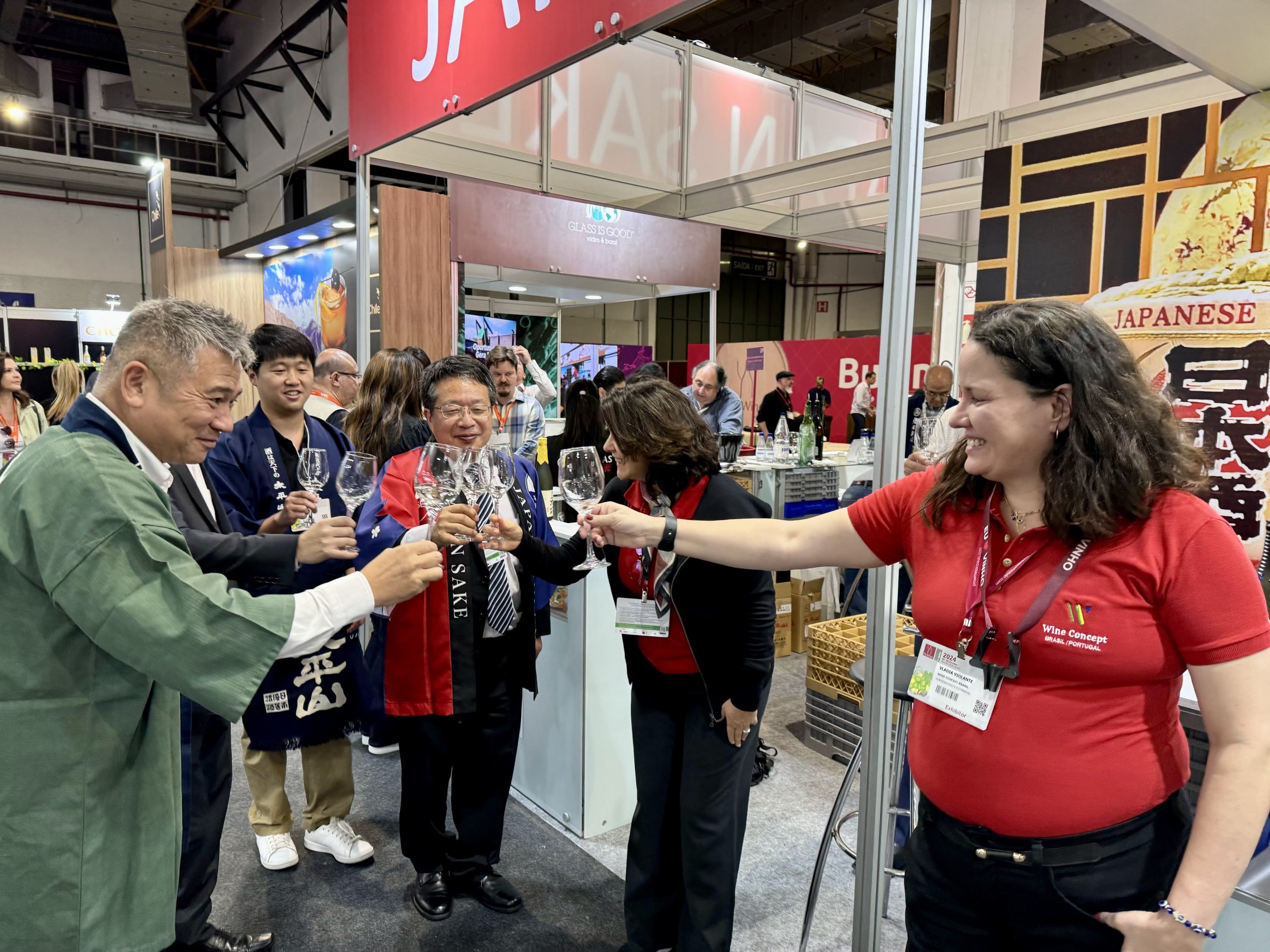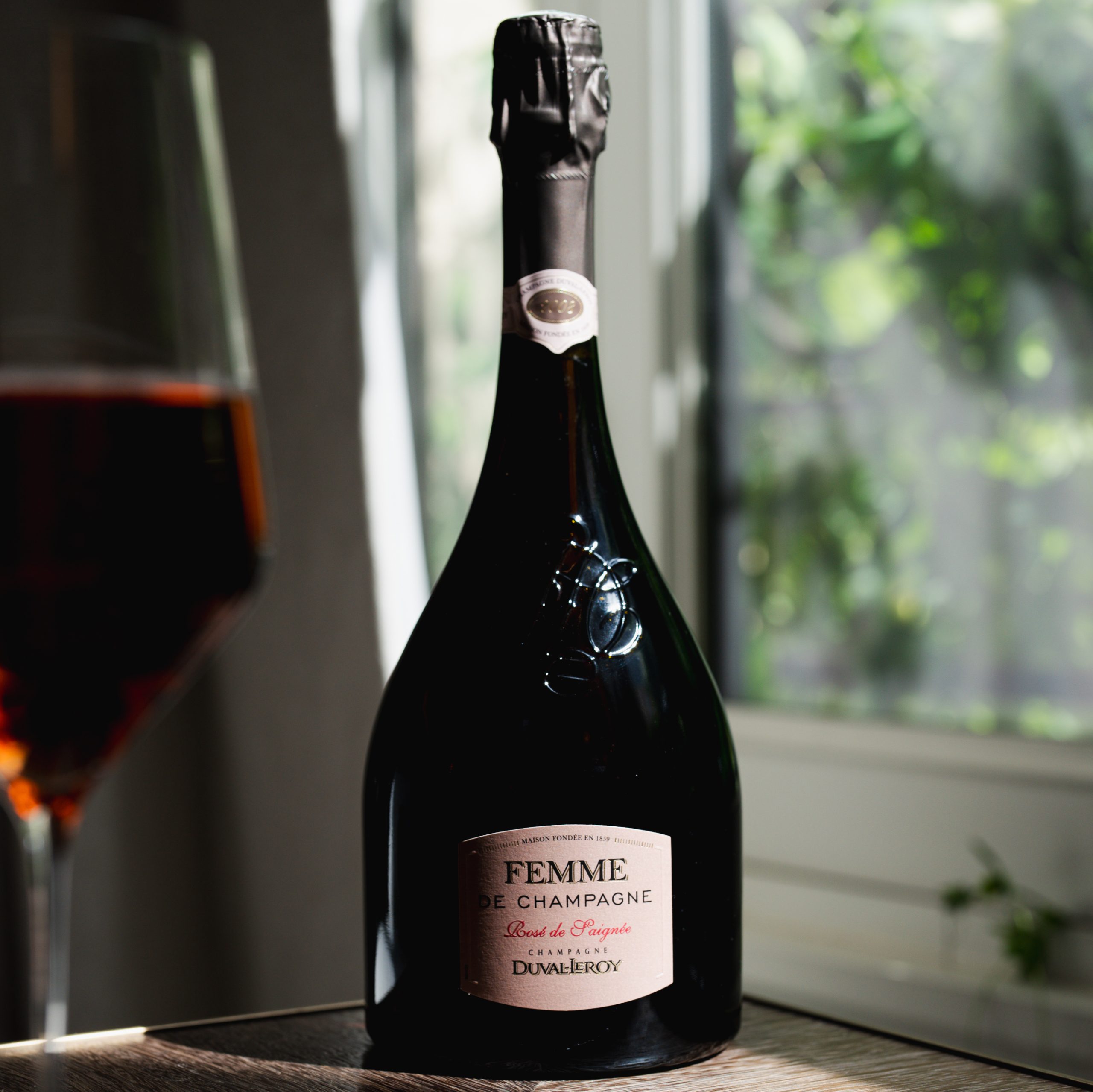The 8 trends shaping the Chilean wine industry
By Lucy ShawHaving been famously dismissed as the ‘Volvo’ of the wine world, Chile is now one of the most exciting winemaking nations on the planet. Eager to explore every last nook of the country, winemakers have been venturing to Chile’s extremes, from the star-speckled skies of the Atacama Desert to the wind-whipped valleys down south, where ripening is pushed to its limits.
Benefitting from an enviable combination of a winemaking history dating back to the 16th century along with the liberating freedoms that come with being a New World wine country, Chilean producers have worked out which varieties thrive in which regions and are now focusing on refining and fine tuning their offerings.
Reflective of its regional focus, in July 2018 Chile gained four new DOs: Lo Abarca in the San Antonio Valley, Apalta and Los Lingues in the Colchagua Valley, and Licantén in the Curicó Valley, all of which can now all appear on wine labels. While it may be too early to expect consumers to understand the meaning of these terroir delineations, this push towards mapping the country’s prized plots will help Chile in its ultimate quest – to get consumers to trade up and pay more for the country’s wines, shaking off its cheap and cheerful image in the process.
Keen to keep up with the lightning-quick pace of change, we’ve rounded up the key trends that are shaping Chile’s winemaking landscape.
Premiumisation
The Chilean wine industry’s largest collective goal is to champion its premium wines around the world, and shake off its image as a ‘cheap and cheerful’ winemaking nation. Wines of Chile is so serious in its intention that since 2018 it has only promoted wines that sell for over £10 a bottle at retail. The initiative has paid off, leading to a 20% rise in value sales in China last year, and an encouraging uplift in value sales in the US, Japan, South Korea and Hong Kong.
While the coronavirus crisis has put the breaks on continued growth, as consumers curb their spending during these uncertain times, Angélica Valenzuela, Wines of Chile’s commercial director, believes Chile’s premium push will serve the country well in the long-term. “We need to be consistent and continue investing in our premium image, because it is something that requires time to be achieved. We need to reinforce the trading up message with consumer and trade education,” she says.
Aurelio Montes echoes Valenzuela’s sentiments: “Chile has been seen as the good value option for a long time and some producers are afraid to leave that behind. They should be focusing on making higher quality wines and communicating that message,” he says. Simon Doyle of Concha y Toro believes Chile’s biggest challenge lies in “better communicating our credentials to consumers for wines at the super premium level and building our reputation as one of the world’s fine wine producing nations.”
Helping to raise the global image of Chilean wine are the likes of Almaviva, Seña, Clos Apalta and Viñedo Chadwick, all of which are on sale via La Place de Bordeaux in order to help get them into the hands (and cellars) of the world’s top collectors.
Sustainability
Sustainability is a key focus for both individual producers and Wines of Chile at the moment. “Sustainability is the way forward for Chile, and wineries need to be collectively promoting their green credentials. The Chilean government is pledging for the country to be carbon neutral by 2050,” says Wines of Chile’s president, Aurelio Montes. The organisation released the sustainability code for the industry a decade ago, and today 76 wineries representing 80% of bottled wine exports, are certified sustainable.
A long-time leader in sustainable practices, Chile’s VSPT Wine Group is aiming to reduce the quantity and weight of its bottles and packaging so that 100% are separable, reusable, recyclable or compostable by 2030. Keen to tackle the global issue of waste generation, by 2030 the company also aims for 60% of its packaging to be made from recycled materials with zero PVC use.
To encourage consumers to recycle VSPT’s wine bottles, the firm will include recycling instructions on all of its labels. A member of the International Wineries for Climate Action initiative, the group recently launched a range called South Cause, of everyday drinking organic wines, which supports the protection of Chilean glaciers in Patagonia via donations to NGO Glaciares Chilenos.
“Chilean glaciers represent a major water reserve on the planet, and have been affected by global warming. This has generated sea level rises that cause floods, the shrinking of land masses, and the disappearance of coastal cities. It’s time to take action,” says Barbara Wolff, VSPT’s sustainability officer. Santa Rita Estates also puts sustainability at the centre of its operations.
Through its WiSe project, the company is working towards the goal of being zero waste to landfill at its facilities at Alto Jahuel by the end of the year. So far it has recovered and recycled 730 tons of waste. Meanwhile, green-minded wine giant Concha y Toro has committed to the UN-led ‘Business Ambition for 1.5ºC’ initiative of achieving zero absolute emissions by 2050. To achieve this long-term goal, it has set an interim target to reduce absolute emissions by 55% by 2030.
Organics
The growing wellness and ‘clean’ wine trend is fuelling sales of organic wine from Chile. Sales of Cono Sur’s organic wine range are currently up by 50% at Sainsbury’s, with the wines proving particularly popular with eco-conscious consumers aged 25-44. Launched in the UK this year, the range, which is enjoying success in Canada and Scandinavia, includes a Pinot, Sauvignon Blanc, Chardonnay, Malbec and a red blend.
Cono Sur has increased its organic vineyard holdings to supply increasing global demand. To help flag up the range’s environmentally friendly credentials, the labels are printed on recycled paper and feature Cono Sur’s signature bicycle motif in green. The estate’s winemaker, Matías Ríos, believes organics is “the future” for Chile. “Organic wines are growing in popularity around the world. It’s in our DNA to work this way as you end up with higher quality, better balanced wines,” he says.
Another organic pioneer in the country is Miguel Torres Chile, which currently boasts 95% certified organic vineyards. Having noticed a rising consumer interest in organic wines, the estate is shouting about its credentials more loudly on its labels. “We used to be shy about promoting our organic status, but all of our wines are branded as organic now and we’ve made the wording more prominent on our packaging,” says managing director Jaime Valderrama.
“The growing interest in organic wine goes hand in hand with people being more curious about where the food they eat comes from. Organic wines are also becoming easier for consumers to understand.”
The beautiful south
The increasing threat of global warming and the ongoing issue of water availability in the north and centre of the country are driving winemakers down south. ”Chile’s winemaking future lies in the south. It’s a new world down there and winemakers are going to move even further south to make fresher wines, as it’s what consumers want to drink,” says Viviana Navarrete of Viña Leyda. Over the last decade winemakers have been planting in regions like Itata, Bío Bío, Malleco and Osorno, which, while extreme now, will emerge as increasingly viable winemaking spots as the world warms up and reservoirs run dry.
Cono Sur has been working in Bío Bío for over a decade with Riesling, Gewürztraminer, Pinot Noir and Sauvignon Blanc, and recently released a pale pink rosé within its Bicicleta range made from Bío Bío Pinot. Located 925km from Santiago, Osorno is the most extreme of the southern regions. At the moment the conditions do not permit for a commercial harvest every year, but the southern region is showing great potential for sparkling wine production. The valley is so unchartered its frost risk hasn’t even been calculated yet.
Partner Content
Aurelio Montes is putting his faith in Mechuque, a tiny island on the Chilean archipelago of Chiloé, 1,000km south of Santiago, which he discovered through sailing trips. He has a two-hectare vineyard on the island planted with Chardonnay, Pinot, Sauvignon Blanc, Albariño, and Riesling. Located in a horseshoe-shaped bay, while the vineyard lies at the limits of winemaking, Montes says the frost risk is minimal.
“Mechuque has its own microclimate as is protected from the Humboldt Current, so frost isn’t a problem,” he says. Getting the grapes to fully ripen is, however, and Montes is seeking to remedy it by putting mussel and clam shells between the vines to warm the earth beneath them. So far the mussel shells are absorbing more heat.
Sparkling
Chile’s southern regions are showing great potential for sparking wine production, with an increasing number of producers planting vines in regions like Osorno with the intention of making high-end fizz. In 2018 Casa Silva released a traditional method sparker – Fervor del Lago Ranco – from Lake Ranco in Osorno. Made from a blend of Pinot and Chardonnay from the 2012 vintage, the wine was aged for three years on its lees.
“There were no other sparkling wine regions in Chile before this. The future of Osorno will be high-end sparkling. The quality is there and the sense of origin. It can’t be compared with any other sparkling wine in the world,” Thomas Wilkins, Casa Silva’s marketing director told db in 2018.
Sharing the same latitude as Tasmania (42°), Aurelio Montes believes the island of Mechuque on the Chilean archipelago of Chiloé has fantastic potential for traditional method sparkling wine production. “I want to make a high-end method sparkling wine from here. I’m not sure we can reach 12 degrees alcohol for still wines every year, but we can make good base wines for sparkling. Of all the grapes planted I’ve planted, Chardonnay and Pinot seem the happiest here,” he says.
Cono Sur chose the Casablanca Valley as the region for its high-end traditional method fizz, Centinela, a blanc de blancs made from Chardonnay. The fizz is selling well both at home in Chile and in the mature sparkling market of Japan. “It’s a complex and mineral wine for special moments – we want it to compete at the top end with Champagne and English sparkling wine,” says winemaker Matías Ríos.
“The sparkling category is growing a lot in Chile and producers are putting more energy into its production. I’d like to see more regulations in terms of where it can be made and from which varieties.”
Ancestral varieties
While Chile has been propelling itself forward over the last few decades into unknown winemaking territories, pushing winemaking to daring new extremes, at the same time vintners have been seeking inspiration from historic winemaking practices and ancestral varieties as a way of reconnecting with their roots. As recently as 1985, 44% of the vines planted in Chile were País. While the workhorse grape fell out of fashion in the nineties and early noughties, País has enjoyed a revival in recent years, particularly in Itata, which is home to ancient bush vines.
Located 400km south of Santiago, Itata is leading the ancestral varieties renaissance with País, Cinsault and Muscat, and has become home to some of the most exciting wines coming out of Chile. The region’s minimum intervention approach has attracted the attention of sommeliers and independent merchants eager to unearth Chile’s wilder side.
While País traditionally made rustic reds, those made in Itata tend to lean on the lighter side, and are made with minimal use of oak. The delicate Cinsaults similarly play into the growing global trend for lighter reds that can be enjoyed on their own without the need for food.
Miguel Torres Chile makes a trio of small batch wines in Itata under its La Causa label – an old vine País, a Cinsault, País and Carignan blend, and a Moscatel. “Itata feels like a very Europen region with its old bush vines and minimum intervention winemaking – these are the kinds of wines that used to be made in Chile,” says managing director Jaime Valderrama. Passionate about País, the company’s latest release is an old vine expression from granite and volcanic soils in Bío Bío called Millapoa made with wild yeasts and minimal sulphur.
Groups
Realising that there is strength in numbers, Chilean winemakers have been forming groups to promote region-specific wines, grape varieties and methods of production. Pioneering the trend was Movi, which formed in 2009 to support small, independent vintners. Two years later came Vigno, an association promoting old vine Carignan from Maule, which now boasts 17 members, including Emiliana and Garage Wine Co.
Vigno has strict regulations that all members must abide by. Wines must contain at least 85% Carignan and must be two years old before release. Vineyards need to be at least 30 years old and dry-farmed, and must be bush vines from a defined area within Maule. Movi and Vigno have since been joined by Viñas del Valle de San Antonio, an association of eight wineries in Leyda formed last year to promote cool climate coastal wines and tourism; Chile Desnudo, a group of wineries making low- intervention wines; Slow Vino Chile, a collective whose members produce less than 150,000 bottles a year; and Colchagua Singular, a compendium of small producers in the Colchagua Valley.
Members of the recently formed Viñas del Valle de San Antonio are studying the differences in the soils from the subzones within the valley to create Chile’s equivalent of Burgundy by mapping out its micro-appellations. “We’re pushing for the creation of more sub DOs in San Antonio. I would love for Leyda to have more regulations in terms of which varieties can be planted, maximum yields and proper boundaries. Regulations will give us credibility, consumer confidence and help us increase the price of our wines. People don’t appreciate the amount of work that goes into them,” Viviana Navarrete, chief winemaker of Viña Leyda, told db last year.
Fine-tuning Cabernet
While old vine País and Maule Carignan tend to hog the headlines, Chile’s most successful (and profitable) grape variety is Cabernet, which accounts for around 30% of all vines planted in Chile, with just under 42,000 hectares under vine. First planted in Chile in the 19th century, over the last 30 years producers have mapped out the top terroirs in Alto Maipo for the grape and are currently exploring how different plots within the same vineyard express themselves with a level of precision viticulture that would impress the Bordelais.
Wines of Chile is working on a project to “clean” the old massal selection Cabernet vines that were planted in the 19th century to ideally resurrect some of the ancient strains. Santa Rita is also working to isolate and clean a portion of its old vine material. The project involves selecting the healthy vines, analysing them in a lab then conducting trial plantings. “We have a big challenge to keep these vines alive; it’s a long-term project rescuing our heritage,” says Carmen’s winemaker, Emily Faulconer.
Sebastian Labbé, custodian of Santa Rita’s ‘ultra-premium’ wines, is overseeing an ambitious replanting project at the company’s estate in Alto Jahuel. “It’s like doing a triple click into the earth and finding out all the different soil types we have, from clay and alluvial soils to volcanic deposits,” he says. “My dream is to make a collection of six Cabernets from different plots in Alto Jahuel that show how the soil type influences the style of the wine. We have 10-12 plots that we could isolate for this project and are experimenting with them at the moment.”





I will never understand the País grape hype. It is very low quality and it shows in the wines. Valuing any cultivar simply because it comes from old vines is a huge mistake.
There are some absolutely stunningly delicious wines made from Pais, though as with everything, not all wines are brilliant and not everyone is going to love them.
They have a place. So does the more ‘international’ stuff. Keep trying it, you may be surprised.
I agree Marcelo Sola, the same with Criolla in Argentina